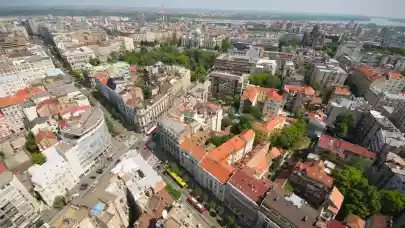
The international consulting company Cushman & Wakefield has summed up the third quarter of 2021 for the commercial real estate market in the CEE region. The investment volume at the end of the third quarter of the year amounts to €6.7 billion and is nearly 13% lower than for the same period in 2020.
Increased momentum in 2021 is not yet visible in the volume of deals closed in Q3 (13% behind the same period last year for CEE), despite the Czech Republic and Slovakia bucking this trend with increases, year to year. Transactions have taken longer to close so we expect volumes to correct in the fourth quarter to come. The lag in volume is a reflection of slower processes and of not a shortage of capital, so we expect volumes to continue to gain ground in 2022. Industrial transactions remain dominant with offices now recovering.
POLAND
The pipeline of transactions in progress suggests Q4 could still catch up with 2020 volumes, thanks to both single asset and portfolio transactions in the industrial segment plus a rebound of the office sector with the return of larger scale core offices, smaller single asset core plus and value-add deals.
CZECH REPUBLIC
On the Czech real estate market, hotels and prime retail in Prague are still suffering from the slump in travel and lower employee mobility. Other sectors have performed admirably, despite Covid – retail, in particular. As there is a shortage of adequate product on the market, insufficient to cover the excess of capital available, for this year investment activity of around EUR 1 billion is anticipated, with office transactions having an approx. 50% share. In the coming year, significant changes from the current trends of low activity and high pricing are not expected, despite a probable increase in industrial and retail deals next year.
HUNGARY
The Hungarian market is ending the year strongly, with bids recently achieved at record yields for assets in both the office and logistics sector. Last year’s total investment volumes - which in themselves were not as constrained as on other markets – will probably be exceeded soon. Indeed, office transactions (the most active sector) have already surpassed 2020 levels.
Particularly worthy of note is the increased interest from international institutional funds, some of whom have not been active in the market for over a decade. Hungary still offers comparative value compared to its peer markets and its strong occupational fundamentals are apparently being recognised. Competing with them are some of the larger domestic funds who had been quiet for the previous two years but seem to be reawakening - along with newer players who had come to dominate the market over this time.
ROMANIA
The investment pipeline for the coming months remains consistent, as the closing of several transactions is expected to increase the yearly investment volume in Romania to between €800 million and €1 billion - comparable to the previous years’ totals. We are, however, seeing a limited number of active disposal mandates in the market, and this will impact the investment volume in 2022, despite the fact that liquidity and investor interest in the market remain solid.



